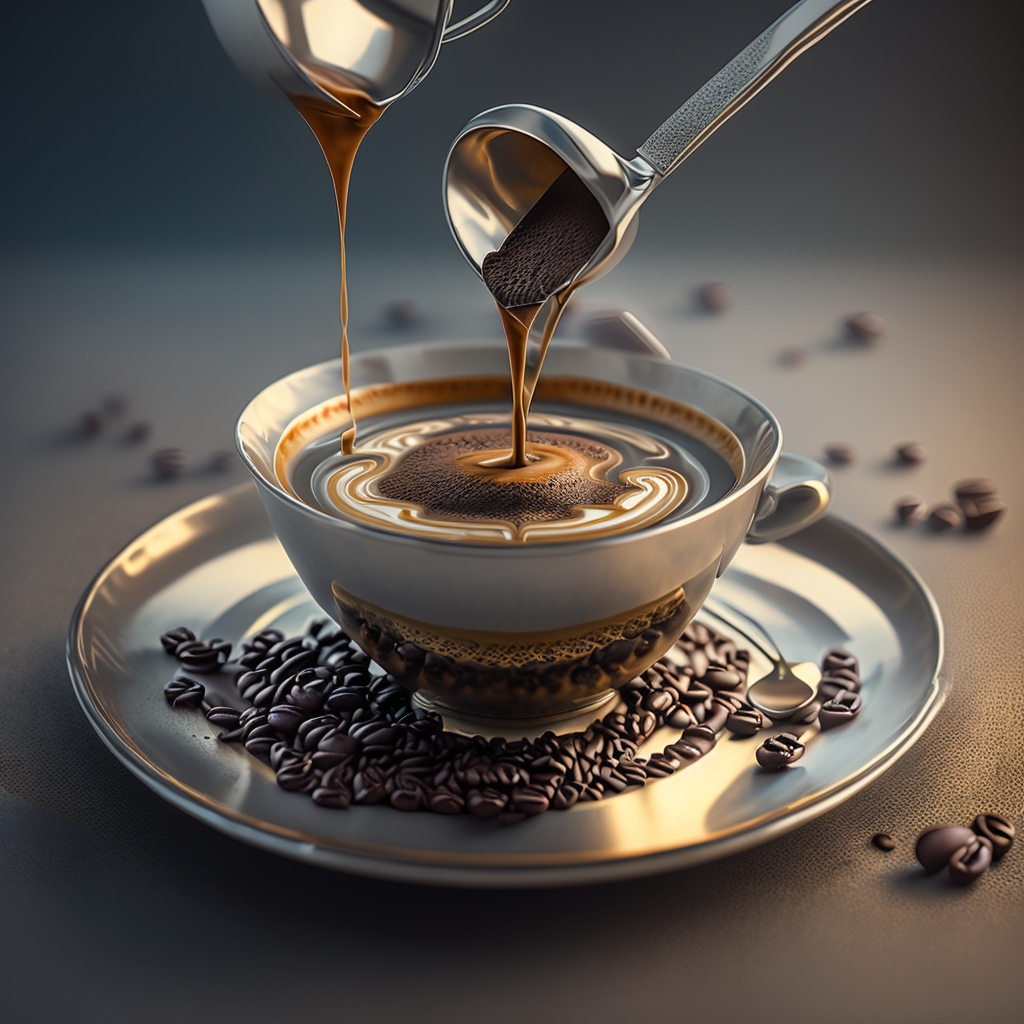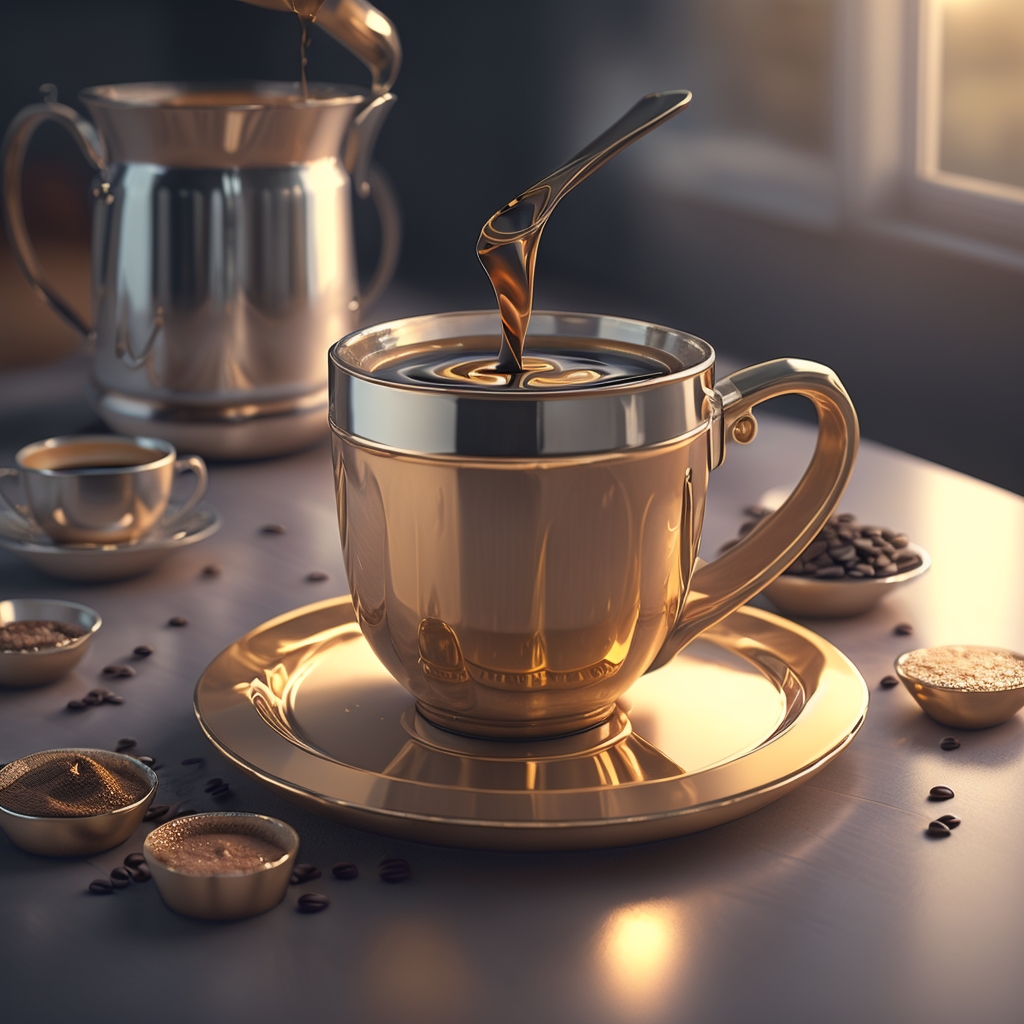Unmasking the Silver-Tongued Impostors: Why Does My Coffee Taste Metallic?
Introduction
Over the years, coffee has evolved from a humble energizer into a liquid sonnet, a daily brew bringing warmth, focus, and joy to millions across the globe. But what happens when your personal symphony of taste takes an unexpected turn? When notes of bitterness strike off-key, tainting your morning cup with a peculiar metallic edge? Let’s dive in.
The Sense of Metallic Taste in Coffee
A metallic taste in coffee is an unexpected guest, popping up uninvited and ruining your quiet coffee moments. It is akin to sipping from a stainless-steel glass or biting into an aluminum foil. While the effect isn’t positively harmful in small doses, a persistent tang of metal can dampen your coffee experience.
Root Causes
Like a tale with no one villain, the metallic taste of coffee is often the sum of multiple factors. It can be the result of everything from the nature of the water used to prepare your coffee, to the grind size and brewing technique, to overlooked elements such as the kettle’s material or unclean coffee equipment.
Ironing Out the Culprit
Before we delve into a foolproof methodology to alleviate your coffee from its metallic shackles, it’s crucial to understand that the key is in the details. It’s simple math, really: improve the factors you can control such as water type, coffee beans, grind size, and brew technique, and you are more than halfway into transforming that unwanted metallic knock into a symphony of coffee flavors.
Table: Factors causing metallic taste in coffee and their solutions
| Factor | Solution |
|---|---|
| Water Type | Use purified or bottled water |
| Coffee Beans | Select good quality beans |
| Grind Size | Adjust grind size according to brew method |
| Brew Technique | Adapt brew time to avoid over-extraction |
What’s Next?
Now you’re equipped with the knowledge of why coffee sometimes tastes metallic, it’s time to explore these factors in more detail, and the accompanying solutions. Buckle up coffee enthusiasts, it’s time for a caffeine-fueled deep dive into the world of metallic coffee taste.

Breaking Down the Barriers: The Underlying Causes of Metallic Taste in Coffee
Tracing the Source: Water and Coffee Beans
It might seem improbable, but the humble molecule H20 can indeed be a culprit behind the metallic taste in your coffee. Specifically, hard water with high levels of iron, magnesium, or other minerals. When boiled, these ions can interact with your coffee, bestowing that unwanted metallic aura. Conversely, the quality of coffee beans can’t be overlooked. Cheaper coffee often comes from robusta beans that can lend a metallic flavor, especially when over-roasted.
The Grind Size and Brew Method Connection
Moving on to another significant actor in our play—grind size and brewing method. A coffee that’s ground too fine, leading to over-extraction during brewing, can result in a metallic flavor. Rendering your coffee powder as fine as sand might seem a good idea for strong coffee, but it can also be the sneaky culprit corrupting your cup with a metallic sign-off. Similarly, your brewing method is a vital part in this equation. Rapid brewing methods such as espresso can sometimes press out the metallic taste if the other elements of the coffee are not in harmony.
The Mysterious Role of Brewing Equipment
Finally, and perhaps most overlooked, is the brewing gear. From the kettle that heats your water to the coffee maker that brews your magic potion, every piece can influence the flavor. If made from low-grade steel or aluminum, or if harboring some undetected rust, the metallic residue can easily slip into your brew, turning that delightful aroma into a tin-scented disappointment. A periodic maintenance of your brewing apparatus can thus do wonders, not just for your coffee’s health, but also your own.
Putting it All Together
As we’ve explored, the causes of metallic taste in coffee are both diverse and interconnected. As you trace the culprit in your case, remember that the world of coffee is a playground of nuances. An unforeseen metallic intruder might just be an invitation to dive deeper into your coffee journey, adjusting and experimenting along the way. So, dear reader, let’s forge on to the promised land of flawless coffee taste, guided by the wisdom we’ve just gathered.

Caffeine Alchemy: Simple Fixes to Avoid Metallic Taste in Your Morning Brew
Adjusting the Water: The Right Balance
The miracle of clean, fresh water can often be taken for granted. But as a joint agent with your coffee beans, it demands respect. To avoid metallic hints, avoid hard water loaded with calcium and magnesium. Opt for filtered water, which still retains necessary minerals but brings balance to your cup. And remember, water temperature plays a part in the extraction phase – keeping it between 195° and 205° Fahrenheit preserves your coffee’s intended flavor.
Bean Quality and Roast Level: The Significance of Selection
Your choice of coffee beans can ultimately be your first defense against metallic tanginess. Arabica beans, exhibiting a gentler, more complex flavor profile, are a safer bet against robusta counterparts. Moreover, roast level should not be unseen. Darker roasts can sometimes obscure a metallic flavor, but be wary of over-roasting which can be a double-edged sword, bringing back that very same metallic taste we aim to avoid.
The Grind Size Fact: Fine-Tuning the Details
Grinding your coffee to the right consistency is a mastery of its own. To Sonic Youth’s finely tuned distortion, your coffee’s grind size requires careful calibration. Err on the side of coarser grind, and monitor closely if you switch between different brewing methods – each has its own grind size sweet spot.
Equipment Control: Brewing with Confidence
Your brewing gear stands as your trusted companion on the journey to a perfect cup of coffee. Do not neglect it. Choose your equipment wisely, free from harmful substances, clean it regularly, and replace it timely to ensure that none of your brew is spoiled by metallic residue. In the end, your coffee should taste of nothing but the pure delight of well-brewed beans—no metallic overtones allowed.
Perfecting the Recipe
Navigating the terrain of coffee brewing can be complex, but it need not be arduous. With the right strategies in place, and a keen eye for detail, you’ve got the recipe to silence that metallic crash and usher in a symphony of deliciously balanced flavor in your coffee cup. On we go, coffee lovers, to the realm of satisfying, metallic-free brews.

“Give Your Palate a Peace Treaty: How to Eradicate Metallic Taste from Your Coffee”
“Decoding Flavor Profiles: The Taste Trail”
Tasting coffee is a sophisticated practice just like wine tasting. The synchronous play of acidity, sweetness, bitterness, and mouthfeel is what gives us the complete coffee experience. But when these factors misalign, a metallic flavor can steal the show. Identifying which element is out of balance enriches your understanding and mastery of your brew.
“Taking A Closer Look: The Coffee Water Ratio”
Creating a harmonious tango of coffee and water in your cup can dictate whether you end up with a pleasing melody or a clanging cacophony. If too much water dances with too little coffee, the extraction process is compromised, leading to under-extraction and a potential metallic aftertaste. A precision scale can help you engineer the perfect marriage of coffee to water.
“Proper Storage Tactics: Preserving Coffee’s Integrity”
Like a fine piece of art, quality coffee calls for careful preservation. Shield your beans from four notorious enemies – light, oxygen, heat, and moisture. A cool (but not cold), dark, and dry place holds the key to preserving your beans, thereby decreasing the chances of developing a metallic flavor.
“Dealing with Leftovers: A Cautionary Tale”
While it might seem like a harmless act to reheat your leftover coffee or let it sit for extended periods, this can lead to an unpleasant metallic taste. Freshly brewed coffee is the gold standard. But if you must save coffee for later, consider using a thermal carafe to maintain temperature without continued cooking.
“A Final Whisper of Advice”
Delving into the heart of this metallic riddle, we unmask steps to safeguard our treasured brew from this intrusive taste. By becoming an ardent student of your coffee’s needs, you can ensure the metallic gatecrasher remains permanently uninvited.

“Health Alert: Unearthing the Potential Hazards of Metallic Coffee Taste”
“Reading Between the Sips: Coffee and Your Health”
Before you brush off the metallic taste as just another flavor anomaly, consider this: your coffee could be a litmus test for your health. While it may be a rarity, an evolving flavor profile could be echoing more than just improper brewing methods – it might indicate an underlying health issue.
“Propagators of Metallic Sense: Medical Perspective”
A range of medical conditions, from oral infections, sinusitis, to certain medications and vitamin deficiencies, could potentially meddle with your taste buds. If your morning brew consistently has a metallic note and other food and drink follow suit, it might be a signal to make that doctor’s appointment you’ve been putting off.
“Beware The Hidden Adversary: Excess Minerals in Water”
The problem may well lie not within your cup, but with your tap. High mineral content, specifically iron or copper, lurking in your water supply may be the uninvited guest adding that metallic taste. It can also pose potential concerns over consistent consumption. Investing in a water filter could alleviate both your coffee’s metallic edge and your health worries.
“When The Cup overflows: Overconsumption of Coffee”
Over-indulging in your coffee escapades might lead to an unwelcome nutrient imbalance. High doses of caffeine can hinder iron absorption, tipping the scale towards a predominant metallic taste. Remember, balance is the art; overconsumption can too often turn our pleasures into poisons.
“A Parting Gesture of Caution”
While coffee offers us a ticket to a sensorial roller coaster – it could also be the canary in the coal mine. Being attentive to changes in the taste of your coffee can ensure that you’re not only brewing better but also staying in tune with your health.

“Beyond the Bean: A Comprehensive Overview of Additional Factors That Influence Metallic Coffee Taste”
“Roast Harbinger: The Telltale Dark Side of Your Favorite Bean”
The type of roast and freshness of your beloved coffee beans can be secret fountains breeding that metallic taste. Over-roasted or stale beans can often lend a metallic aftertaste. Your best bet? Opt for medium to light roasts and ensure you’re brewing with ultra-fresh beans.
“Instruments of Infusion: Brewing Equipment’s Underplayed Role”
If the coffee beans are the writers of flavor, consider your brewing equipment the ink with which they write. Neglected or unclean equipment can taint your cup with metallic notes. And then there’s the use of metals like aluminum in stovetop or espresso makers, which, when corroded, can sing an unexpected metallic tune.
| Material | Effect |
|---|---|
| Aluminum | Liable to corrosion, Metal leaching |
| Stainless steel | Resistant to corrosion, minimal metallic taste |
| Plastic, Ceramic, Glass | No metallic taste |
“Taming the Beast: Your Water’s Impressive Influence”
Water may sound innocent, but it’s a magician that can morph your coffee’s flavor dramatically. Apart from its mineral composition, variables like total water hardness, pH, and even temperature can cause a metallic sensation in your coffee.
“The Hidden Dance of Coupling Compounds”
Many trace elements or volatile compounds can undergo complex chemical reactions upon brewing – leading to nuanced flavors or… you guessed it, a metallic taste. Everything, from your daily milk to innocuous cinnamon, is a potential partner in this taste-altering dance.
“Culinary Comfort in a Cup”
In conclusion, mufti-faceted factors influence how your morning coffee tastes. Understanding and tweaking some of these elements can help eliminate the metallic edge and ensure a pleasant cup. Extending your concern beyond just the coffee beans provides an enriching experience, a delightful cup bursting with full-bodied flavor, and perhaps peace of mind with each sip.
